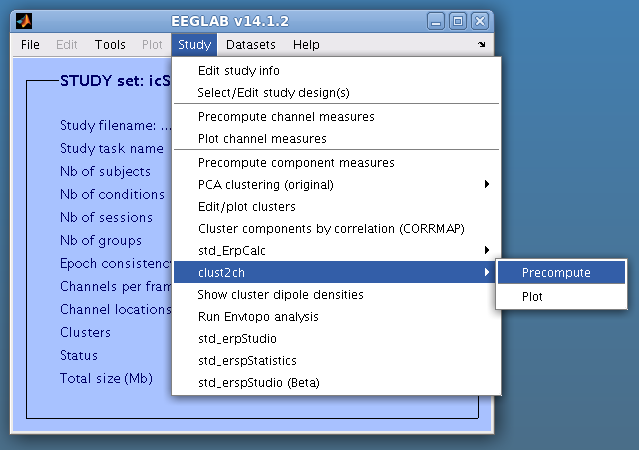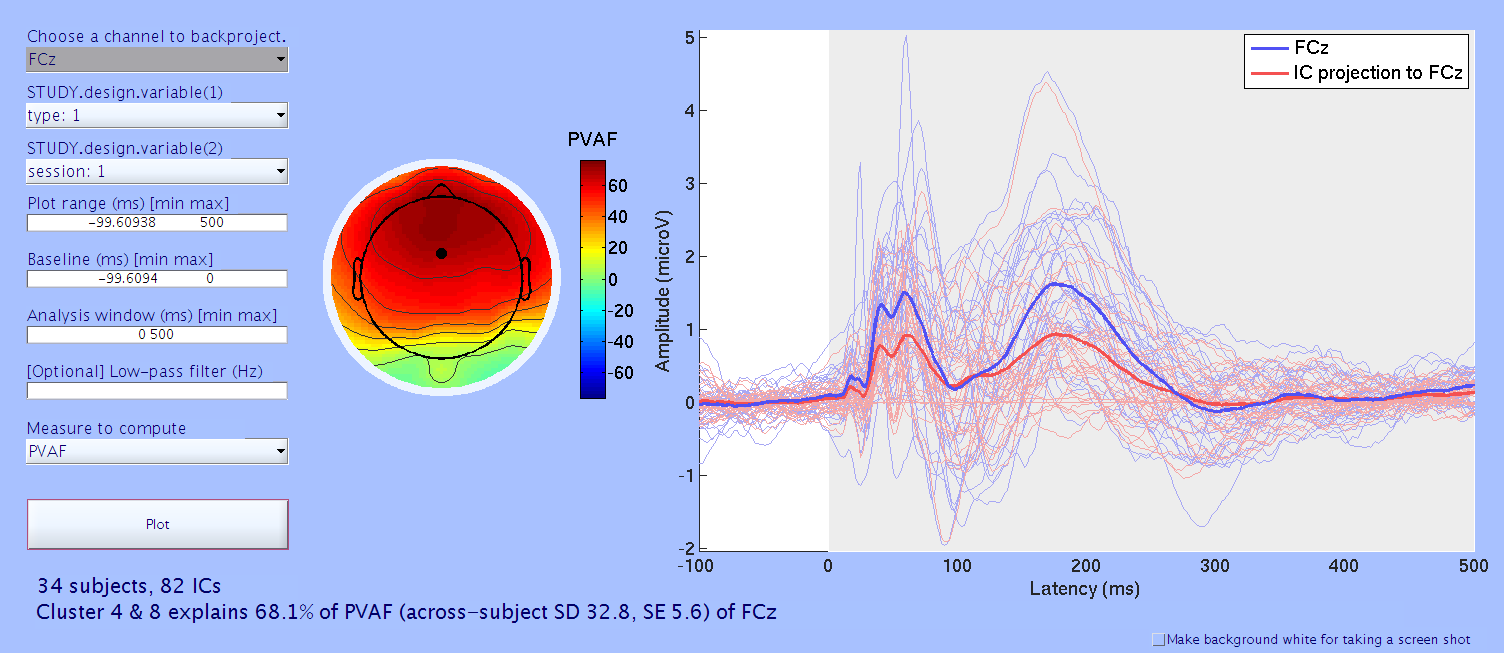std_clust2ch() is a renewed version of std_selectICsByCluster(). I forgot to use std_selectICsByCluster, and when I used it did not work. When I tried to fix the problem, I found code was not very clear. Thus I re-made it into a simpler, more intuitive version.
- std_clust2ch performs cluster-level IC selection & backprojection to generate another set of .set files. All the ICs rejected in the process of creating the final cluster selection will be excluded (i.e., rejected) in the newly generated .set files. The IC rejection mask is saved in EEG.etc.originalIcIdxBeforeClusterIcSelection.
- std_clust2ch performs IC cluster-to-scalp channel projection and computes either percent variance accounted for (PVAF) or area under a curve (AUC) explained by the ICs included by the selected clusters.
This is how GUI menu on EEGLAB STUDY looks. Precompute first, then plot.
If you specify the save path, the plugin will save the new .set files after rejecting ICs. The generated .set files can be used straight for SIFT and MPT.
For this plugin, percent variance accounted for (PVAF) measures variance across time within a user-specified window, and percent power accounted for (PPAF) measures IC's contribution to channel in power. In EEGLAB envtopo() functions, PVAF and PPAF are calculated as follows.
PVAF = 100 - 100 x meanAcrossTime(varAcrossChannels(allICs - selectedICs))/meanAcrossTime(varAcrossChannels(allICs))
PPAF = 100 - 100 x meanAcrossTime((allICs - selectedICs).^2)/meanAcrossTime(allICs.^2)
Note that calculation of variance removes DC part of the selected window, which is fine for envtopo() PVAF because zero-sum assumption is guaranteed by average referencing. However, DC difference between contributor (IC ERP) and receiver (scalp channel ERP) is critical information in ERP (i.e., which P300 is larger!) To address this, using PPAF may be more optimal.
As an alternative measure, area under a curve (AUC) is implemented as well. AUC would be suitable for examining a time window around a broad peak/trough.
See also this page for further information about the older version called std_selectICsByCluster().


